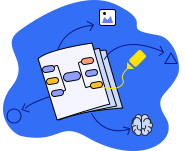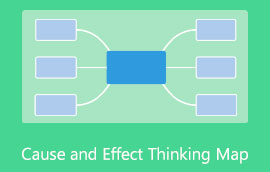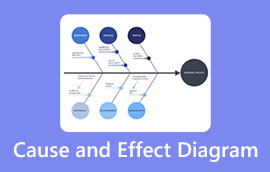Easy Root Cause Analysis Steps You Need to Take [Explained]
Ever wondered why problems keep popping up, even after you think you've fixed them? That's where Root Cause Analysis (RCA) comes into play. In problem-solving, Root Cause Analysis stands as a powerful methodology. If you’re new to it and plan to use it, then you’ve come to the right place. In this post, we have discussed the details of this method. Plus, we have provided a Root Cause Analysis diagram that you can use as a reference.

- Part 1. What is Root Cause Analysis
- Part 2. How to Do Root Cause Analysis
- Part 3. Bonus: Types of Root Cause Analysis
- Part 4. FAQs About How to Do Root Cause Analysis
Part 1. What is Root Cause Analysis
Before knowing how to do the Root Cause Analysis, get to know first what this method is all about. Now, mishaps and issues are unavoidable in any industry or organization. Thus, you need a way to recover faster and prevent more problems from occurring. Given these, Root Cause Analysis is the option. Now, Root Cause Analysis (or RCA) is a systematic and quality management process. Many organizations use it to find the root of a problem, issue, or undesirable outcome. It does not only address the symptoms, rather, it determines the underlying causes or factors of the problem.
Root Cause Analysis aids organizations in learning the root cause of the issue. Plus, it allows them to create and implement effective and sustainable solutions. That way, they can prevent the recurrence of the issue. Not only that, they can also develop a plan to anticipate future occurrences.
And that’s it! We can now proceed on how to conduct a Root Cause Analysis.
Part 2. How to Do Root Cause Analysis
Now, here’s how you can perform the Root Cause Analysis.
Define the problem.
The first thing you need to do is to know and define the problem. Clearly state the problem or issue you want to address. Be specific and focus on observable facts. Without articulating the specific problem, it will be hard to create a way to a solution.
Gather important data.
Gather relevant data and information related to the problem. This could include reports, metrics, observations, and any other data sources. Also, ensure that you record any data that might be helpful in identifying the problem.
Determine possible causes/factors.
Brainstorm and list down all potential causes of the problem. Encourage input from team members and stakeholders to ensure a comprehensive understanding. In this step, identify as many causes or factors as possible. Since in RCA, you don’t want to resolve the most obvious case, you have to dig deeper.
Identify the root cause(s).
Here, you can use some root analysis tools to determine the main cause of the problem. Use tools like 5 Whys, FMEA, fishbone diagram, etc., which will be discussed in the next section. That way, you can dig deeper into the reasons behind the problem.
Develop and implement solutions.
The next thing you should do is to develop corrective actions or solutions. Ensure that these solutions will address the root cause. Finally, create a timeline and plan to implement your solution. And that’s how to perform Root Cause Analysis.
How to Make A Root Cause Analysis Diagram
To make your desired Root cause Analysis diagram, we highly recommend you use MindOnMap. It is a powerful and reliable diagram maker that you can find over the internet. A web-based program that you can access on various browsers. It includes Chrome, Safari, Edge, and more. Now, it also offers a downloadable app version available on both Mac and Windows. What’s more, it offers different icons, themes, annotations, etc., to make creation more personalized. Plus, it provides several templates that you can use. It offers fishbone diagrams, treemaps, flowcharts, org charts, and much more. In fact, you can use it to create different Root Cause Analysis format visual representations. To know how to do it, here’s how:
Go to the official page of MindOnMap. Then, choose what you prefer from the options Create Online and Free Download.
Secure Download
Secure Download
After accessing the tool, select your desired layout from the available options. In the New section, you’ll find Mind Map, Fishbone, Tree Map, Flowchart, and so on.
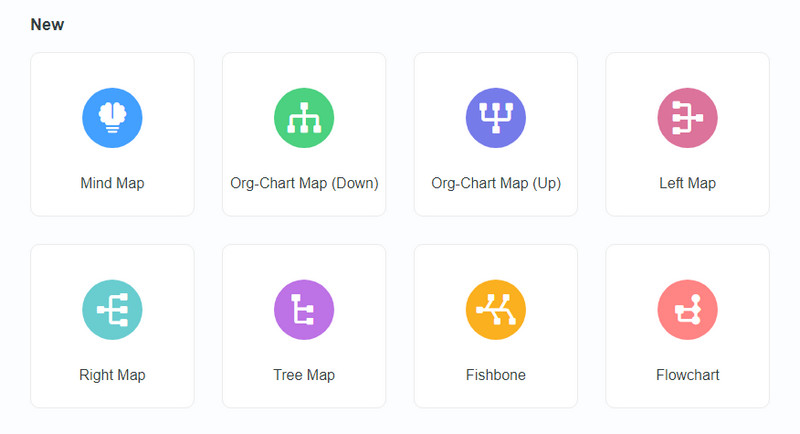
Subsequently, use the annotations, themes, styles, icons, or shapes you need. Click and customize them on the canvas to create your diagram.
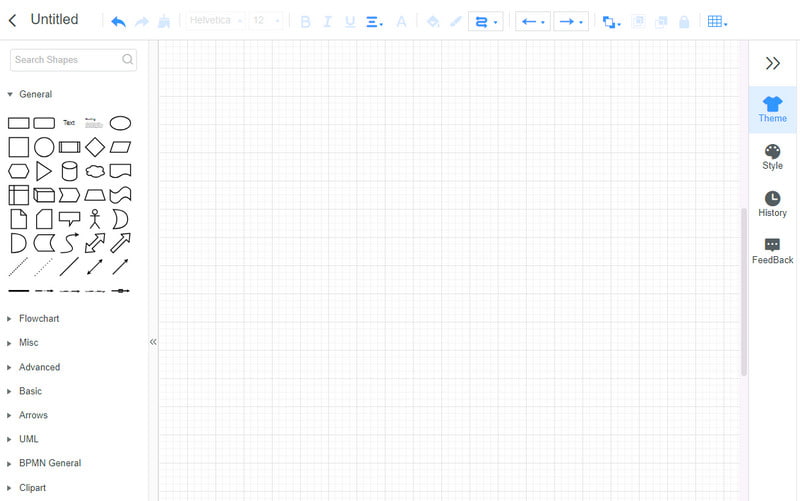
Once the diagram is ready, hit the Export button to save it on your computer. From the drop-down menu that prompts, choose your desired output format.
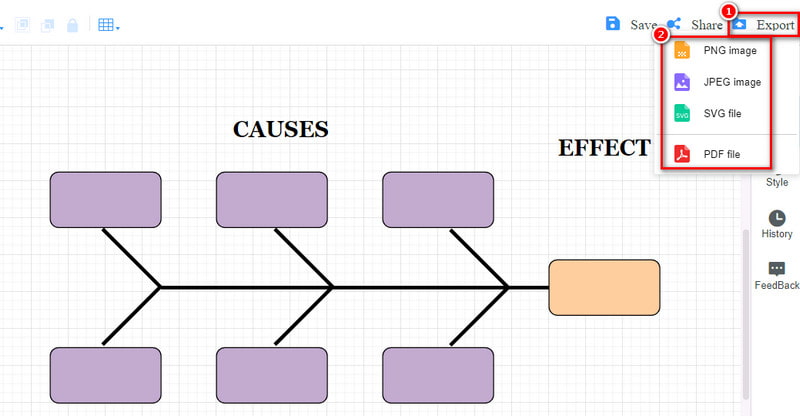
Optionally, click the Share button to let others view your diagram and acquire new ideas. Set the Password and Valid Until. Finally, hit the Copy Link option.
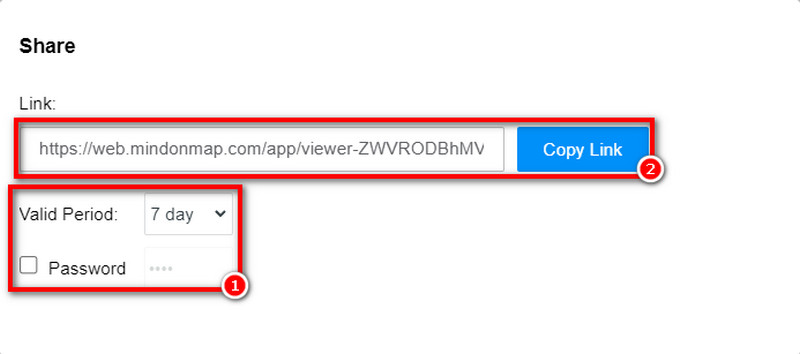
Part 3. Bonus: Types of Root Cause Analysis
If you’re unsure what Root Cause Analysis method to use, get to know them one by one. Here are some of the types of Root Cause Analysis.
1. 5 Whys
5 Whys is a method that involves repeatedly asking “Why?”. You keep asking why until the root cause of a problem is identified. It enables a deep exploration of the issue. Thus, it is effective for situations that don't demand numerical analysis.
2. Fishbone Diagram (Ishikawa or Cause-and-Effect Diagram)
This visual tool, fishbone diagram, organizes potential causes of a problem into categories. As its name suggests, it is a diagram that resembles a fish skeleton. It helps teams explore various aspects contributing to issues. Aspects may include people, processes, equipment, and environment.
3. Failure Mode and Effects Analysis (FMEA)
FMEA assesses the potential failure modes of a system, product, or process. At the same time, it assesses their consequences and likelihood. It helps prioritize issues based on severity, occurrence, and detection. FMEA is another tool that can help you with your Root Cause Analysis.
4. Fault Tree Analysis (FTA)
FTA is another Root Cause Analysis tool you can try. It examines the various potential events and their interrelationships. These things could lead to a specific undesired outcome. It is often used in industries such as engineering and safety to analyze system failures.
Part 4. FAQs About How to Do Root Cause Analysis
What is a Root Cause Analysis in HR?
RCA in HR is used to identify and address the main reasons behind workplace issues. It involves digging deeper to understand the core causes of problems related to human resources. It may include such as employee turnover, performance issues, or organizational conflicts.
What is root cause analysis important?
It is important because it helps you move beyond addressing surface-level symptoms. Instead, it focuses on resolving the underlying issues. By identifying and tackling the root cause of the problems, you can prevent the recurrence of the issue in the future.
What are the 3 main objectives of root cause analysis?
The three main objectives of Root Cause Analysis are:
1. Identifying the potential causes of the problem.
2. Determining the root cause(s) among the causes identified.
3. Address the root cause(s) to prevent the problem from happening again.
Conclusion
To wrap it up, that’s all the Root Cause Analysis steps you must take. Now that you’ve learned them, it will be easier to perform the analysis. Not only that, you have also discovered the best way to create a diagram. It is through MindOnMap. With its straightforward way, whatever type of user you are, you can use it. Finally, you can make a personalized and creative diagram.








